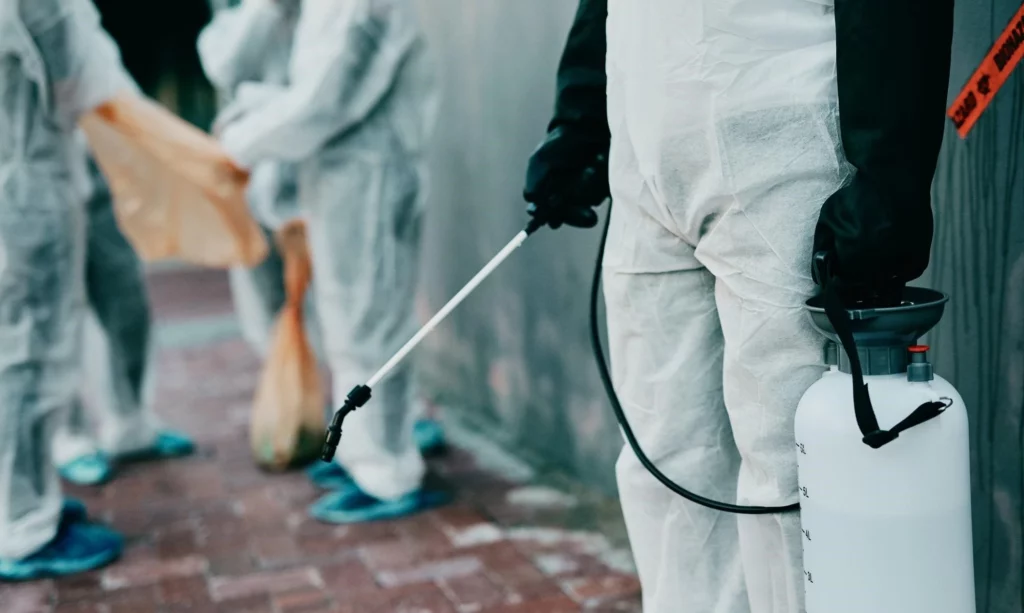A procedure used in every industry as well as domestically, deep cleaning can be an effective way to eradicate mess from any area. Deep cleaning is a broad term, and it can refer to everything from a general but thorough cleaning of a particular area to specialist solutions such as trauma or biohazard cleaning.
These highly specialised techniques require professional involvement as they can include the completion of a thorough analysis, the use of specialist equipment and the handling of harmful materials.
By turning to a specialist in deep cleaning, you can avoid the unpleasantness and potential danger of cleaning up certain messes yourself. If you’re unaware of how deep cleaning works, you may be interested to find out exactly what it involves, when it’s required and how long it may take.
What does a deep clean involve?
A number of different procedures can be involved in deep cleaning, depending on what is being cleaned and where this cleaning is taking place.
Experts in performing a deep clean will be equipped with many different solutions to suit the environment and to tackle the cause of the mess.
In broad terms, duties that may be required in the process of performing a deep clean include:
Depending on the area where the cleaning is required, and the cause and nature of the mess, a risk assessment may need to be carried out to determine how best to approach the process. For example, this type of assessment is important if harmful substances will be involved or the area where the cleaning is taking place is dangerous for any reason.
Where appropriate, deep cleaners should change into protective clothing to avoid coming into contact with harmful substances, and to prevent the transfer of these substances out of the affected area to other locations..
Depending on the substances or area being cleaned, this could mean wearing full face masks, a biohazard suit, gloves, respirators and other forms of personal protective equipment (PPE). However, it’s usually a standard requirement to wear coveralls.
During any commercial deep clean, the affected area should be identified, closed off to anyone that isn’t involved in the cleaning process and prepared for cleaning.
In deep cleans that involve areas affected by disasters such as fires, floods or exposure to chemical agents, any items that are destroyed will need to be removed and disposed of safely. Not only is this required if the item is contaminated with potentially dangerous substances, but it also helps to fully clean the area.
If the scene of a crime or road traffic accident is being cleaned, removal of objects could be more substantial.
When the area has been cleared, the deep cleaners will use special cleaning agents to remove any trace of the mess and help to restore the area to its condition prior to the incident.
After the process is complete, the experts will check that the area is sufficiently clean for future use. If harmful chemicals were used in the cleaning process, a period of time may have to elapse before people are allowed to use the area.

When do you need deep cleaning?
Deep cleaning is something that’s required in many different environments and across industries. As a general rule of thumb, if an area has been contaminated by a dangerous chemical, bodily fluid, another form of harmful substance or has been subject to substantial mess, deep cleaning is the most effective solution.
Examples of when and where deep cleaning services are used include:
- Car accidents
- Undiscovered deaths
- Crime scenes
- Squatters
- Hoarders
- Drug and meth labs
- Prisons
- Ambulances and other vehicles
- Areas badly affected by bird droppings
How long should a deep clean take?
Due to the variety of different environments and incidents that require a deep clean, the time it takes to complete this process varies. For example, a simple office clean will be far less time consuming than an air and surface decontamination that would prevent cross-contamination and the spread of infectious diseases. With this in mind, a deep clean can take anywhere between one and 40 hours to complete, or potentially longer in rare cases.



